
Journal of the Korean Crystal Growth and Crystal Technology
Scope & Guideline
Unveiling the Secrets of Crystalline Structures
Introduction
Aims and Scopes
- Crystal Growth Techniques:
Research on various methods of crystal growth, including hydride vapor phase epitaxy (HVPE), physical vapor transport (PVT), and metal-organic chemical vapor deposition (MOCVD), emphasizing the optimization and characterization of these techniques. - Material Properties and Characterization:
Studies focusing on the structural, optical, electrical, and mechanical properties of crystalline materials, utilizing techniques such as X-ray diffraction, electron microscopy, and spectroscopic methods to understand material behavior. - Nanomaterials and Coatings:
Investigations into the synthesis and application of nanocrystalline materials and thin films, including their role in enhancing properties such as photocatalytic activity, electrochemical performance, and mechanical strength. - Applications in Technology:
Research exploring the practical applications of crystalline materials in various technologies, including semiconductors, energy storage, photonics, and environmental sustainability. - Innovations in Materials Science:
Development of novel materials, such as oxyfluoride glasses and hybrid nanocomposites, and their potential applications in advanced technologies.
Trending and Emerging
- Sustainable and Eco-Friendly Materials:
Research on materials that utilize waste or environmentally friendly processes, such as carbon capture materials for cement admixtures, is gaining traction, reflecting a global trend towards sustainability in materials science. - Advanced Nanostructures and Hybrid Materials:
There is an increased focus on the synthesis and application of nanostructured materials, particularly hybrid composites that combine different material properties for enhanced performance in energy and environmental applications. - Electrocatalysis and Energy Applications:
Emerging studies on electrocatalytic materials, particularly for energy conversion and storage (like water splitting and battery technology), indicate a trend towards addressing energy challenges through advanced crystalline materials. - Optoelectronic and Photonic Devices:
The exploration of materials for optoelectronic applications, including electrochromic devices and photoluminescent materials, is trending, highlighting the journal's focus on cutting-edge technologies. - Crystal Growth for Emerging Technologies:
Research on crystal growth techniques tailored for next-generation technologies, such as quantum computing and high-performance semiconductors, is becoming increasingly relevant.
Declining or Waning
- Traditional Materials Science:
Research related to traditional materials science, such as basic studies on common ceramics and metals, appears to be decreasing in favor of more specialized and advanced materials. - Sintering and Processing Techniques:
There is a noticeable decline in the number of papers focusing on conventional sintering techniques. This may indicate a shift towards more innovative processing methods, such as additive manufacturing and nanomaterial synthesis. - Gem Quality and Aesthetic Applications:
Studies focusing on gem-quality materials and their aesthetic applications seem to be less frequent, possibly reflecting a broader focus on functional materials over decorative aspects.
Similar Journals

JOURNAL OF VACUUM SCIENCE & TECHNOLOGY A
Innovating Materials Science through Vacuum Technology.JOURNAL OF VACUUM SCIENCE & TECHNOLOGY A, published by the esteemed American Institute of Physics, is a leading journal in the field of materials science and applied physics, with an ISSN of 0734-2101 and an E-ISSN of 1520-8559. This publication serves as a vital platform for researchers and professionals focused on condensed matter physics, surfaces and interfaces, as well as coatings and films, contributing significantly to our understanding of vacuum technology and its applications. With a commendable Q2 ranking in key categories such as Condensed Matter Physics and Surfaces and Interfaces, the journal showcases rigorous research that pushes the boundaries of science and technology. The journal is particularly noted for its impact within the community, holding impressive Scopus rankings that highlight its relevance and influence. Although not an Open Access journal, it remains a crucial resource for academics seeking high-quality, peer-reviewed articles from 1970 through 2024. We invite you to explore the latest advancements and innovative findings that this journal presents, positioning you at the forefront of research in vacuum science.
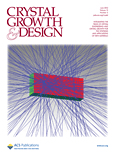
CRYSTAL GROWTH & DESIGN
Innovating the Future of Materials ScienceCRYSTAL GROWTH & DESIGN, published by the American Chemical Society, is a premier journal dedicated to the interdisciplinary study of materials science, condensed matter physics, and miscellaneous chemistry. With an ISSN of 1528-7483 and E-ISSN of 1528-7505, this journal provides a vital platform for the dissemination of innovative research findings from 2001 through 2024, reflecting the dynamic advancements in crystal growth and design methodologies. It is recognized for its impact in the field, earning a distinguished placement in the Q2 quartile across categories of Chemistry, Condensed Matter Physics, and Materials Science for 2023. Researchers engaging with CRYSTAL GROWTH & DESIGN will find a wealth of peer-reviewed articles encompassing cutting-edge experimental techniques, theoretical frameworks, and application-oriented studies. Although not an open-access journal, it remains a critical resource for academics, professionals, and students aiming to enhance their understanding of crystal growth processes and material functionality, with Scopus rankings reflecting its reputable authority within the scientific community.
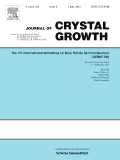
JOURNAL OF CRYSTAL GROWTH
Exploring the Intricacies of Crystal GrowthJOURNAL OF CRYSTAL GROWTH, published by Elsevier, stands as a vital platform in the realm of condensed matter physics, inorganic chemistry, and materials chemistry. With its inception dating back to 1967 and a promising convergence continuing through 2024, this journal encompasses the latest research and advancements in crystal growth phenomena. Although it does not currently offer open access options, its rigorous peer-review process ensures high-quality scholarly contributions that are essential for researchers, professionals, and students alike. The journal's solid standing is reflected in its Scopus rankings, with placements in the third and second quartiles across relevant fields and notable percentiles. Operating from the heart of the Netherlands, JOURNAL OF CRYSTAL GROWTH not only fosters academic dialogue but also enhances the understanding of crystallization processes crucial for materials engineering and applied sciences, making it an indispensable resource for anyone dedicated to exploring the intricacies of crystal growth.
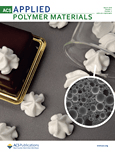
ACS Applied Polymer Materials
Exploring the Frontiers of Polymer ResearchACS Applied Polymer Materials is a prestigious journal published by the American Chemical Society, specifically tailored for the dynamic fields of Organic Chemistry, Polymers and Plastics, and Process Chemistry and Technology. With its ISSN 2637-6105, the journal has rapidly established itself within the academic community, achieving a distinguished Q1 quartile ranking across multiple categories in 2023. This places it among the top-tier journals globally, reinforcing its critical role in disseminating groundbreaking research and innovation in polymer science. The journal is known for its rigorous peer-review process and publishes high-quality articles that are pivotal for researchers, professionals, and students eager to advance knowledge in polymer materials and their applications. Positioned to cover converging themes from 2019 through 2024, ACS Applied Polymer Materials embraces a wide scope of studies, from fundamental chemistry to practical engineering applications, thereby fostering significant advancements in material science. While it offers traditional access options, the journal's impact is reflected in its impressive rankings within Scopus, indicating its relevance and influence in the chemical engineering domain. Join the global community of innovators and discover the latest insights that continue to shape the landscape of applied polymer research.

Nanomaterials, published by MDPI in Switzerland, stands as a leading platform in the realm of materials science and chemical engineering. Since its inception in 2011, this Open Access journal has garnered significant attention, reflected in its impressive rankings—placing in the Q1 category for Chemical Engineering and Q2 for Materials Science as per the 2023 quartiles. The journal consistently fosters innovation and interdisciplinary research through its rigorous peer-reviewed articles, inviting submissions that span a wide range of topics from nanostructured materials to advanced engineering techniques. With a commendable Scopus rank—#44 in Chemical Engineering and #93 in Materials Science, both within the top percentiles—Nanomaterials serves as an essential resource for researchers, professionals, and students eager to stay abreast of developments in this rapidly evolving field. Since its establishment, it has distinctively contributed to the academic community by facilitating insightful knowledge exchange and promoting high-quality research around nanoscale materials.

ACTA CRYSTALLOGRAPHICA SECTION C-STRUCTURAL CHEMISTRY
Exploring the Depths of Structural ChemistryACTA CRYSTALLOGRAPHICA SECTION C-STRUCTURAL CHEMISTRY is a respected journal in the fields of condensed matter physics, inorganic chemistry, and materials chemistry, published by the International Union of Crystallography. With an extensive history dating back to its inception in the late 1980s, this journal serves as a significant platform for researchers to disseminate high-quality research on structural chemistry, focusing on the synthesis and characterization of crystalline materials. Despite currently holding a Q4 ranking across multiple academic categories, it remains an essential resource for those engaged in these scientific disciplines, facilitating dialogue and collaboration among experts. The journal's commitment to publishing innovative studies ensures that it continues to contribute to the advancement of knowledge in its field. Although it does not offer Open Access, the journal is dedicated to maintaining rigorous peer-review standards, making it a reliable source for scholars and practitioners alike. Located in the United States, ACTA CRYSTALLOGRAPHICA SECTION C is a pivotal part of the global crystallography community.

npj 2D Materials and Applications
Unveiling the Future of Materials at the Nanoscalenpj 2D Materials and Applications is a premier, open-access journal within the NATURE PORTFOLIO, dedicated to advancing the knowledge and applications of two-dimensional materials. Launched in 2017 and published from the United Kingdom, this journal quickly established itself as a key resource in its field, holding the prestigious Q1 quartile ranking across multiple disciplines, including Chemistry, Condensed Matter Physics, and Materials Science. With an impressive focus on innovative research and interdisciplinary applicability, npj 2D Materials and Applications addresses the scientific community's need for rapid dissemination of cutting-edge findings, fostering collaboration, and inspiring new applications in mechanical engineering and materials science. Researchers, professionals, and students engaged in the study and development of two-dimensional materials will find this journal an invaluable asset, offering a platform for their contributions to a rapidly evolving and transformative area of research.
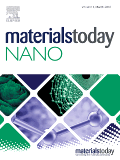
Materials Today Nano
Advancing the Frontiers of Nano-Materials ResearchMaterials Today Nano, published by Elsevier, is a premier academic journal dedicated to the forefront of nano-materials research, encompassing innovations and advancements in biomaterials, condensed matter physics, electronic, optical, and magnetic materials, as well as materials chemistry. With an impressive Q1 ranking across multiple categories, including biomaterials and materials chemistry, this journal serves as a essential platform for researchers, professionals, and students aiming to contribute to and stay informed on cutting-edge developments that push the boundaries of materials science. Its open access model allows for wider dissemination of high-impact findings, ensuring that the research reaches a global audience. Operating from the United Kingdom, Materials Today Nano plays a vital role in fostering interdisciplinary collaboration and advancing scientific understanding in this rapidly evolving field.

Crystals
Bridging Theory and Application in Materials ScienceCrystals is a premier open-access journal, published by MDPI since 2011, that focuses on the multidisciplinary fields of chemical engineering, condensed matter physics, inorganic chemistry, and materials science. With its E-ISSN 2073-4352, the journal is headquartered in Switzerland, and actively contributes to the global scientific community by facilitating the dissemination of high-quality research. Ranking in the Q2 quartile across multiple categories, including Chemical Engineering (miscellaneous) and Materials Science (miscellaneous) for 2023, Crystals provides a platform for innovative studies that span from fundamental research to practical applications. The journal's commitment to open access ensures that groundbreaking findings are readily available to researchers, professionals, and students alike, fostering an environment of collaboration and knowledge sharing that is essential in advancing the scientific understanding of crystalline materials.
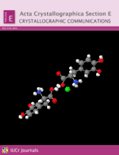
Acta Crystallographica Section E-Crystallographic Communications
Advancing crystallographic knowledge for a brighter scientific future.Acta Crystallographica Section E-Crystallographic Communications is a premier academic journal dedicated to the field of crystallography, published by the International Union of Crystallography. With an Open Access model established since 2008, this journal fosters the rapid dissemination of significant research findings in crystallographic studies, offering researchers and professionals the ability to freely share and access critical data. The journal is recognized for its contribution to various interdisciplinary categories, achieving notable standings in the 2023 rankings, categorized in the Q3 quartile in Chemistry (miscellaneous) and Materials Science, and the Q4 quartile in Condensed Matter Physics. By bridging the gap between theoretical and practical aspects, Acta Crystallographica Section E serves as a vital resource for those looking to deepen their understanding of crystallographic phenomena and its applications in science and engineering. The journal maintains its commitment to quality and innovation in research, ensuring a vibrant platform for scholarly communication within the scientific community.